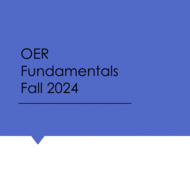
(View Complete Item Description)
Short Description:
Return to milneopentextbooks.org to download PDF and other versions of this textNewParaNursing Care at the End of Life: What Every Clinician Should Know addresses an essential component of the basic educational preparation for the professional registered nurse student. Recent studies show that only one in four nurses feel confident in caring for dying patients and their families and less than 2% of overall content in nursing textbooks are related to end-of-life care. Despite the tremendous growth in palliative and end-of-life care programs across the country, very few nursing education programs provide adequate education on this topic for future nurses. The purpose of this textbook is to provide an in-depth look at death and dying in this country and explore the vital role of the nurse in assisting patients and families along the journey towards the end of life. There is an emphasis throughout the book on the simple, yet understated value of effective interpersonal communication between the patient and clinician. The text provides a basic foundation for understanding death and dying, including a brief historical examination of some main conceptual models associated with how patients cope with impending loss. An overview of illness trajectories and models of care, such as hospice and palliative care, are discussed. Lastly, the latest evidence based approaches for pain and symptom management, ethical concerns, cultural considerations, care at the time of death, and bereavement are examined. The goal of this text is to foster the necessary skills for nurses to provide compassionate care to individuals who are nearing the end of life and families who are experiencing the loss of a loved one. Every chapter contains a “What You Should Know” section which highlights and reinforces the main message nurses should know when caring for their patient.
Long Description:
Nursing Care at the End of Life: What Every Clinician Should Know addresses an essential component of the basic educational preparation for the professional registered nurse student. Recent studies show that only one in four nurses feel confident in caring for dying patients and their families and less than 2% of overall content in nursing textbooks are related to end-of-life care. Despite the tremendous growth in palliative and end-of-life care programs across the country, very few nursing education programs provide adequate education on this topic for future nurses. The purpose of this textbook is to provide an indepth look at death and dying in this country and explore the vital role of the nurse in assisting patients and families along the journey towards the end of life. There is an emphasis throughout the book on the simple, yet understated value of effective interpersonal communication between the patient and clinician. The text provides a basic foundation for understanding death and dying, including a brief historical examination of some main conceptual models associated with how patients cope with impending loss. An overview of illness trajectories and models of care, such as hospice and palliative care, are discussed. Lastly, the latest evidence based approaches for pain and symptom management, ethical concerns, cultural considerations, care at the time of death, and bereavement are examined. The goal of this text is to foster the necessary skills for nurses to provide compassionate care to individuals who are nearing the end of life and families who are experiencing the loss of a loved one. Every chapter contains a “What You Should Know” section which highlights and reinforces the main message nurses should know when caring for their patient.
Word Count: 45537
ISBN: 978-1-942341-19-2
(Note: This resource's metadata has been created automatically by reformatting and/or combining the information that the author initially provided as part of a bulk import process.)
Material Type:
Textbook
Author:
Susan E. Lowey


















